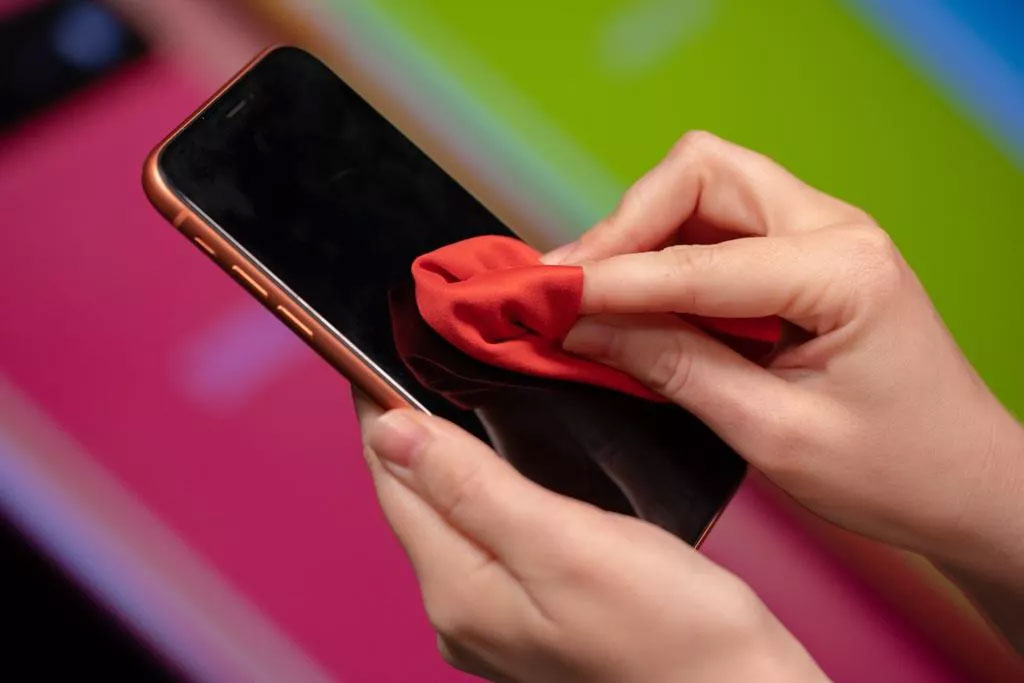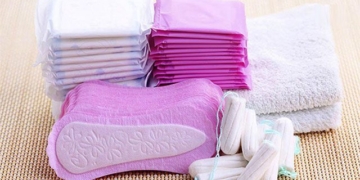In the context of the ongoing spread of Covid-19, keeping your hands and smartphone clean can help protect you from the virus.
Guide to Cleaning Your Phone to Prevent Coronavirus
Our hands come into contact with many surfaces, and bacteria from these surfaces end up on our hands and fingers, which are then transferred to our smartphones and subsequently to our nose, eyes, or mouth. This is why many studies confirm that phones are breeding grounds for bacteria and dangerous pathogens.
This article introduces effective methods for cleaning your phone, as well as items and cleaning agents that should be avoided as they may damage your device’s screen. In addition to cleaning your phone, remember to wash your hands regularly according to the guidelines provided by the Ministry of Health.

Make sure you are cleaning your phone correctly. (Photo: CNET).
Cleaning Fingerprints on the Screen
It is very difficult to avoid fingerprints on your phone’s screen due to the natural oils from your skin. The simplest way to clean fingerprints is to use a microfiber cloth and gently wipe the screen. If the screen has dust or stubborn stains, dampen the cloth with distilled water and wipe, avoiding spraying water directly.
This method can also be applied to the back and sides of the phone. Additionally, you can use a dust-absorbing sticker (used to clean the screen before applying a protective film) to quickly clean the front and back of the phone.
Removing Dust from the Charging Port
After prolonged use, dust and even sand can accumulate in the charging port and headphone jack, making it difficult to connect devices. The junction between the screen and the body of the phone is also a favorite hiding spot for dirt.
You can use adhesive tape, such as Scotch tape, cut a small piece, roll it up, and gently insert it into the port. Move the tape along the length of the port to pick up all the dust and small sand particles inside. For speaker holes, use a toothpick or a small air blower to clean out the dust.
Disinfecting Your Phone
If you handle your phone after touching raw meat or public doorknobs, you may want to clean it with alcohol. However, in reality, using alcohol (even diluted with water) is incorrect as it can damage the oleophobic (sweat-repellent) or hydrophobic (water-repellent) coating on the screen.
Additionally, avoid using alcohol or cleaning solutions that contain corrosive substances. Instead, use a microfiber cloth dampened with water or expose it to UV light for disinfection.
The connection ports and speaker holes, which accumulate dust, are among the hardest parts of the phone to clean. Photo: Digital Trends.
Avoid Using Makeup Remover
For those who frequently wear makeup, powder can easily stick to the phone every time you answer a call. However, you should not use makeup remover to clean the makeup residue on the screen, as some chemicals may cause damage.
The recommended tool for cleaning makeup on your phone is a fragrance-free cleaning solution that is safe, such as that from Whoosh.
Of course, you can use a damp microfiber cloth to clean, but be sure to spray the solution instead of pouring water directly onto the cloth.
Water-Resistant Phones: Should You Submerge Them for Cleaning?
If you use water-resistant phones (with water/dust resistance ratings of IP67 or higher), you can rinse them under a gentle stream of water. If not, use a wet cloth to wipe down, then dry with a clean cloth, ensuring all connection ports and speaker holes are completely dry.
If you choose to submerge your phone or rinse it under running water, pay attention to the charging port, as it needs to be completely dry, which can take time. Remember that the water-resistant feature on water-resistant phones is meant to provide peace of mind, not for misuse.
Never Clean Your Phone with These Items
- Glass Cleaner: Some phones are equipped with anti-glare and fingerprint-resistant coatings, which can be eroded by glass cleaner. Using strong cleaners can also make the screen more prone to scratches.
- Kitchen Spray Cleaner: Brands like Apple do not recommend using household cleaning products to clean iPhones as they may damage the screen’s protective coating.
- Paper Towels: These can break apart while cleaning, easily leaving marks or even scratching the phone’s screen.
- Isopropyl Alcohol: Again, these solutions can corrode the screen’s protective coating. Always check the alcohol concentration in the solution; it’s best not to use it.
- Makeup Remover: Makeup removers can damage the surface of the device. Instead, use a soft cloth dampened with water.
- Compressed Air: The components of a phone are very sensitive, so strong air-blowing products like compressed air cans can damage certain parts, especially the microphone.
- Soap and Dishwashing Liquid: Like glass cleaner and kitchen spray, dishwashing liquids and soaps can also corrode the protective coating on the screen.
- Vinegar: Only use vinegar that is very diluted, or mixed with distilled water in a 50/50 ratio to clean the edges and back, not the screen.
- Disinfecting Wipes: Warnings on the packaging indicate you should wash your hands after each use, so using them to clean your phone (then touching it with your hands) is not a good idea. These alcohol-containing wipes will corrode the sweat-resistant coating.
- Hydrogen Peroxide: Hydrogen Peroxide is a common wound cleaning solution in households in Vietnam. It is also used in the production of deodorants and bleaching agents. Apple states that Hydrogen Peroxide can damage the device’s surface.
- Ammonia: Ammonia is widely used in everyday life, especially in cosmetics. Ammonia solutions can be used as solvents and have the ability to dissolve alkali metals (like lithium). This compound often appears in glass surface cleaners, hair bleaches, or kitchen spray cleaners. Due to its solvent properties, ammonia-containing cleaners are advised against by Apple.
Top 5 “live seafood” delicacies in South Korea that make diners “shudder”
What would happen if the distance between Earth and the Moon were reduced to just half?



















































